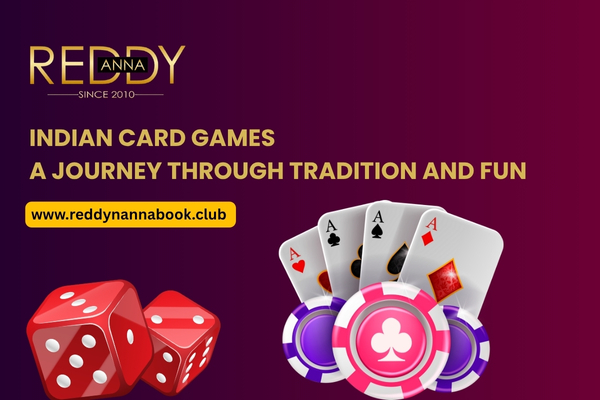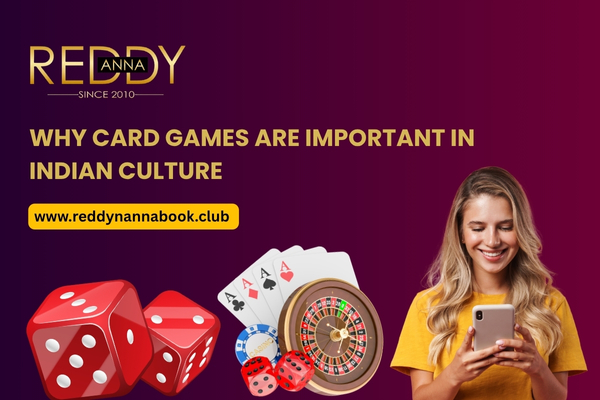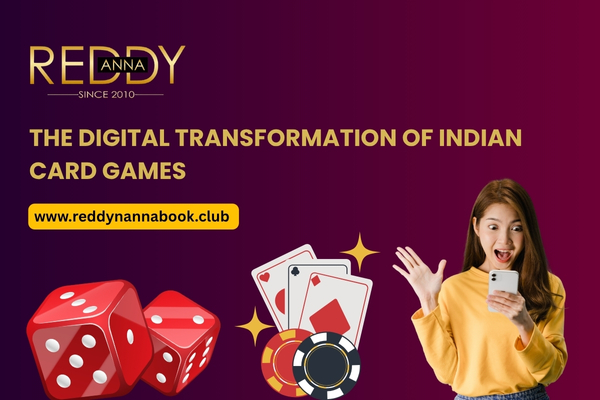
Indian Card Games: A Journey Through Tradition and Fun
Card games are considered to be a cultural aspect of India, as they entertained generations of people and united them. These games are not just a hobby anymore, but a tradition, from spicy family time togetherness to a friendly competition in a village and town. India has, over centuries, come up with a distinct version of the card games, and has combined skill, luck, and social connection in the most fascinating way that makes them never-ending.
How Indian Card Games Began
India is hundreds of years old in the history of card games. The majority of historians believe that the playing cards were brought to India in the 16th century under the Mughal regime. Mughals brought with them the Persian-of-cards and as the times passed, the Indian players altered these games and came up with their own versions that placed in them the local taste and style.
Among the oldest and most unique Indian playing cards were the Ganjifa, which were circular and painted by hand. Ganjifa did not ensure winning or losing, but it was an art form. These games were frequently played in royal courts, and the design of the cards was based on mythology, nature, and local culture. Regions in India worked out their own version, making the game fascinatingly diverse in terms of the regions.

Popular Indian Card Games
Teen Patti (Three Cards)
Teen Patti is a variation of poker popularized as the Indian cousin of poker, now being a common game played during festivals, particularly Diwali. Each player is given three cards, and one has to bet wisely to have the best hand. Teen Patti is partly a game of luck and a game of reading opponents, and thus, it is an exciting game for both amateur and professional players.
Andar Bahar
Andar Bahar is a game that is simple, but it is impossible to resist its charm. A dealer puts an open card, and the players bet whether another card of the same rank will be seen on the Andar (inside) side or the Bahar (outside). The ease of playing along with the rapid speed of the game makes Andar Bahar popular both at home and online.
Indian Rummy
Indian Rummy involves talent, patience, and planning. Normally played on two decks, with 2-6 people, the game aims at creating legitimate sequences and sets. It is a game that requires focus and tactical thinking, so it is particularly widespread among fans of the game who like to test their abilities in relation to others. It is a typical aspect of the informal family and a serious tournament online.
Marriage Rummy
Marriage Rummy is A game similar to Indian Rummy, except it is more lengthy, typically three-deck. Every player receives 21 cards, the task of which is to form sequences and sets. Marriage Rummy is considered a game with a certain level of strategy involved, and one has to plan ahead, which makes it even more exciting for everyone playing it.
Kachufool
Kachufool is also referred to as Judgement or Oh Hell. It is a trick-taking game, and players make bets on the number of tricks they will win in one round. The trump suit varies in each round, making the game always dynamic and unpredictable. Kachufool is very popular in rural and urban India and is usually played in a group during social functions.
Twenty-Eight
Twenty-eight is a 32-card trick-taking game of Bihar origin. Normally, the game is a game of four players in fixed partnerships, and the objective is to take tricks that have high-value cards. The number of points in the deck equals 28, which reason why it is called the game. Twenty-Eight is highly dynamic and strategic, and players have to be able to foresee their opponent and collaborate well with their partner.

Why Card Games Are Important in Indian Culture
Cards are more than a game in India; it is a culture. During festivals like Diwali, families sit together to play games like Teen Patti, Andar Bahar, or Rummy. These games bring out laughter, tales, and enduring memories and uniting generations.
Ganjifa or Kachufool are traditional games that were transmitted in villages and small towns. They are frequently used as a form of socializing and getting acquainted with the neighbors, which preserves the local traditions. Some of these games, too, have certain implicit teachings of patience, tact, and taking risks, and this is a bonus on top of enjoying the game.
The Digital Transformation of Indian Card Games
The rise of online platforms has given Indian card games a new dimension. Currently, you will be able to play Indian Rummy or Teen Patti on websites like Reddy Anna Book and play the games with friends or even with strangers online with a seamless level of play. The innovative variations, tourneys, and rewards presented in mobile apps and websites have been received by players of every age.
Although it is now digital, the strategic, fun, and cultural value of these games has stayed the same. Traditional games have also become easy to learn and explore through online platforms, and even the younger generations will remain in touch with the rich tradition of card games in India.
Among the oldest and most unique Indian playing cards were the Ganjifa, which were circular and painted by hand. Ganjifa did not ensure winning or losing, but it was an art form. These games were frequently played in royal courts, and the design of the cards was based on mythology, nature, and local culture. Regions in India worked out their own version, making the game fascinatingly diverse in terms of the regions.

Final Thoughts
The Indian card games are not just an entertainment source. They are an actual tradition, intergenerational, and a combination of strategy, fortune, and cultural narration. These games keep on changing with their elaborate designs of Ganjifa and the play of Rummy with its strategic play and the quick-paced Andar Bahar, yet their undertones stay the same. Some websites, such as Reddy Anna Book, enable players to play these classic games in new formats so that the legacy of Indian card games can continue to last even decades.
It is not only about victory in these games, but it is also a part of a long-standing tradition that glorifies ability, social bonding, and mutual happiness.
